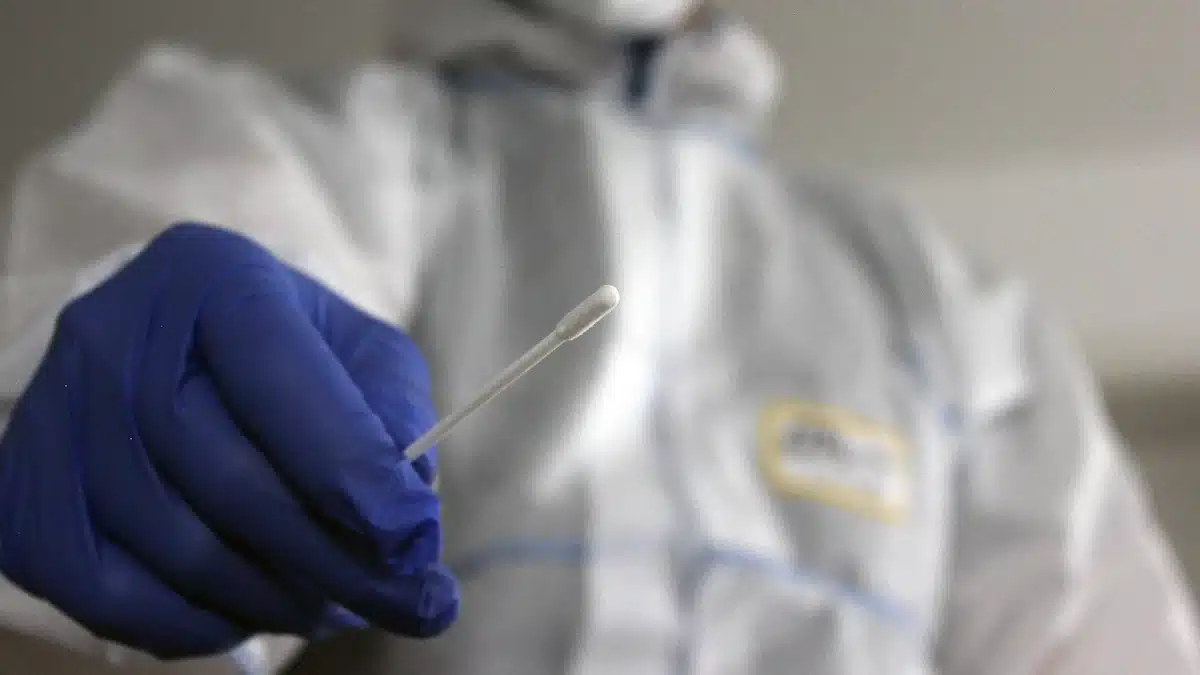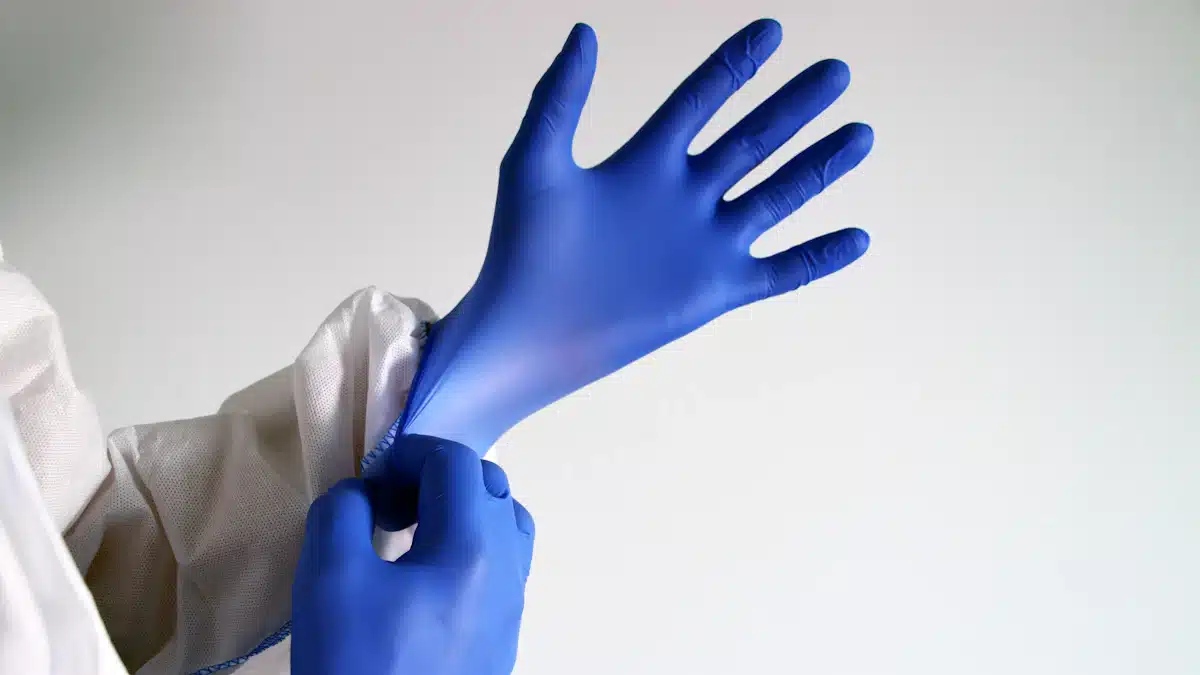
Latex allergy continues to affect millions worldwide, making awareness and prevention essential in 2025. You may encounter latex in everyday items like gloves, balloons and latex allergy-related products, or medical supplies, which can trigger reactions ranging from mild irritation to severe anaphylaxis. The rising use of latex products, including balloons, has contributed to a growing prevalence of this allergy. The global latex allergy market, valued at USD 1.7 billion in 2023, is expected to reach USD 3.26 billion by 2032.
Living with a latex allergy presents unique challenges. You might feel constant anxiety about accidental exposure to items like balloons, especially in public spaces or during routine activities like visiting a doctor. This can lead to emotional stress and even social isolation. Understanding these challenges and adopting effective strategies can help you manage this condition and improve your quality of life.
Key Takeaways
Learn latex allergy symptoms, from mild rashes to serious reactions. Knowing these signs helps you act quickly when needed.
Make your home and workplace safe by using non-latex items. Switch to vinyl or silicone to lower exposure risks.
Tell your family, friends, and doctors about your allergy. Teaching them helps them protect you better.
Keep important medicines like antihistamines and epinephrine with you. Be ready for emergencies at all times.
Research latex-free products and reliable brands. Knowing your options helps you avoid accidental exposure.
Understanding Latex Allergy
What Is a Latex Allergy
A latex allergy occurs when your immune system mistakenly identifies proteins in natural rubber latex as harmful. This triggers a defensive response, leading to the production of Immunoglobulin E (IgE) antibodies. These antibodies attach to mast cells and basophils, causing the release of histamine and other chemicals. This process results in symptoms like itching, sneezing, or even severe reactions such as anaphylaxis. Latex is commonly found in products like gloves, balloons, and medical supplies, making it a frequent source of exposure. Understanding how your body reacts to latex is the first step in managing this condition effectively.
Causes and Risk Factors
Certain factors increase your likelihood of developing a latex allergy. Frequent exposure to latex, especially in occupational settings, plays a significant role.
Healthcare workers, including doctors, nurses, and dental staff, face a higher risk due to regular use of latex gloves.
Individuals with a history of multiple medical procedures, such as catheterization, are more prone to developing this allergy.
Workers in the rubber industry, such as those manufacturing gloves or tires, are also at risk.
Some populations experience higher prevalence rates:
Population Group | Prevalence Rate |
|---|---|
Patients with spina bifida | |
Healthcare workers | 5%–15% |
General population | 1% |
If you belong to one of these groups, you should remain vigilant about potential exposure to latex-containing products.
Balloons and Latex Allergy: A Common Trigger
Balloons are one of the most common triggers for a latex allergy reaction. Latex balloons contain high levels of latex proteins, which can cause severe reactions in sensitive individuals. These reactions may occur through direct contact or by inhaling airborne latex particles released when balloons are inflated or popped. Enclosed spaces with latex balloons can pose a significant risk, as airborne particles become concentrated.
To avoid exposure, consider using alternatives like Mylar balloons. These are made from synthetic materials and do not contain latex proteins. Mylar balloons are also durable and visually appealing, making them a safer choice for celebrations. By choosing latex-free options, you can reduce the risk of a latex allergy reaction and create a safer environment for everyone.
Prevalence of Latex Allergies in 2025
Latex allergies continue to rise globally, and 2025 is no exception. You may notice this increase due to growing exposure to latex products in both personal and professional settings. Improved diagnostic tools also contribute to identifying more cases, helping individuals recognize their symptoms earlier.
Several trends highlight the growing prevalence of latex allergies:
The global latex allergy market is expected to grow from USD 1.83 billion in 2024 to USD 3.26 billion by 2032.
This growth reflects a compound annual growth rate (CAGR) of 7.5% between 2025 and 2032.
Rising exposure to latex in everyday items, such as gloves and balloons, plays a significant role in this increase.
You might wonder why latex allergies are becoming more common. One reason is the widespread use of latex in industries like healthcare, where gloves and medical supplies often contain latex. Another factor is the presence of latex in household items, which increases the likelihood of accidental exposure. For example, balloons, a common party item, release latex particles into the air when inflated or popped, posing a risk to sensitive individuals.
In 2025, healthcare workers and individuals with frequent medical procedures remain at higher risk. However, the general population is also seeing a slight increase in cases. This trend emphasizes the importance of understanding latex allergy triggers and taking preventive measures. By staying informed, you can reduce your risk and protect yourself from potential reactions.
The growing prevalence of latex allergies underscores the need for vigilance. Whether at home, work, or public spaces, recognizing latex-containing products and avoiding them can help you manage this condition effectively.
Prevention and Management Strategies

Identifying Latex-Containing Products
Common Household Items
You may not realize how many everyday items contain latex. Products like rubber gloves, elastic bands, balloons, and even some clothing items often include latex. To reduce your risk of a latex allergy reaction, replace these with alternatives made from silicone, vinyl, or synthetic rubber. For example, choose silicone baking mats instead of rubber ones or vinyl gloves for cleaning tasks. Staying vigilant about the materials in your household can help you create a safer environment.
Medical and Healthcare Products
Latex is prevalent in many medical supplies, which poses a significant risk for individuals with latex allergies. Items such as blood pressure cuffs, adhesive tapes, and disposable syringes often contain latex. Even fitted hospital bed sheets and oxygen masks may include latex components. When visiting healthcare facilities, always inform providers about your allergy. Request latex free medical equipment, such as nitrile gloves or silicone-based devices, to minimize exposure. Being proactive ensures your safety during medical procedures.
Creating a Latex-Safe Environment
At Home
Creating a latex safe environment at home starts with replacing latex-containing items. Opt for synthetic gloves made from nitrile or polyurethane for household chores. Communicate with family members about your allergy and encourage them to avoid bringing latex products into shared spaces. If you require medical devices at home, ensure they are latex-free. These steps reduce the risk of accidental exposure and make your home a safe haven.
In the Workplace
Workplaces can pose challenges for individuals with latex allergies, especially in industries like healthcare. Advocate for policies that ban latex gloves and promote the use of synthetic gloves such as nitrile or vinyl. Encourage your employer to educate staff about latex allergies and implement good housekeeping practices to eliminate latex dust. Screening new employees for allergies and regularly evaluating prevention strategies can further enhance workplace safety. By fostering awareness, you can help create a latex safe environment for everyone.
Educating Others About Latex Allergy
Family and Friends
Educating your loved ones about latex allergies is essential. Teach them to recognize symptoms like hives, nasal itching, or asthma. Encourage them to avoid using latex products around you and to support your efforts in maintaining a latex safe environment. Wearing a medical bracelet can also alert others to your condition in emergencies. By sharing knowledge, you empower those around you to help prevent a latex allergy reaction.
Schools and Workplaces
Schools and workplaces play a crucial role in raising awareness about latex allergies. Advocate for staff training on recognizing symptoms and responding to emergencies. Suggest policies that limit latex products in classrooms or office spaces. For example, schools can replace latex balloons with Mylar alternatives during events. These measures protect high risk groups, such as children with allergies, and promote inclusivity in shared environments.
Diagnosis and Testing for Latex Allergy
How Latex Allergies Are Diagnosed
Skin Prick Tests
Skin prick tests are one of the most common methods for diagnosing a latex allergy. During this test, a small amount of latex is introduced to your skin, usually on your forearm or back. A healthcare provider then observes the area for any reaction, such as redness, swelling, or itching. This test is sensitive and provides rapid results, making it a convenient option. However, it carries a slight risk of triggering severe reactions, including anaphylaxis. Additionally, the lack of FDA-approved latex extracts can limit its reliability.
Blood Tests
Blood tests offer another effective way to confirm a latex allergy. These tests measure specific IgE antibodies to latex in your blood. Commonly used methods include Immuno-CAP, AlaSTAT, and HY-TEC. Each method has varying levels of sensitivity and specificity. For instance, Immuno-CAP has a sensitivity of 76% and specificity of 96%, while HY-TEC boasts a higher sensitivity of 93% but a lower specificity of 73%. Blood tests are particularly useful if you cannot undergo a skin prick test due to severe symptoms or other medical conditions.
Interpreting Test Results
Understanding your latex allergy test results requires careful consideration of several factors. Your clinical history plays a crucial role in interpreting the findings. For example, if you have experienced reactions like hives or breathing difficulties after exposure to latex, these details help confirm the diagnosis. Be aware that both false positives and negatives can occur, so test results should not be the sole determinant. The testing method also influences the interpretation. Skin prick tests and blood tests may yield different insights into the severity of your allergy.
Factor | Description |
|---|---|
Clinical History | Your medical history is crucial for accurate interpretation of test results. |
False Positives/Negatives | Awareness of potential inaccuracies is essential in understanding test outcomes. |
Test Methodology | Different testing methods (skin prick vs. blood tests) yield varying interpretations of allergy severity. |
When to Consult an Allergist
You should consult an allergist if you experience any symptoms that suggest a latex allergy. These include itchy or swollen lips after blowing up a balloon, red or swollen skin after using latex gloves, or swelling of the mouth after a dental visit. Other signs include hives, breathing problems, or anaphylaxis. Even mild symptoms like skin redness or nasal drainage warrant professional evaluation. An allergist can perform latex allergy tests and provide a personalized management plan to help you avoid future reactions.
Treatment Options for Latex Allergic Patients
Managing Mild Reactions
Over-the-Counter Medications
For mild reactions to latex, over-the-counter medications can provide relief. Antihistamines, such as diphenhydramine, help reduce itching, swelling, and other allergy symptoms. Topical corticosteroids can also soothe skin irritation caused by contact with latex. Always follow the dosage instructions on the packaging and consult a healthcare provider if symptoms persist.
Avoidance Strategies
Avoidance remains the most effective way to prevent mild reactions. You can take several steps to minimize exposure:
Use non-latex gloves for tasks that do not involve infectious materials.
Keep your environment clean by regularly removing latex dust from workspaces.
Inform others, including teachers and coworkers, about your allergy to ensure they take precautions.
By adopting these strategies, you can significantly reduce the risk of triggering a reaction.
Treating Severe Reactions
Epinephrine Auto-Injectors
Epinephrine is the first-line treatment for severe allergic reactions, including those caused by latex. It works quickly to raise blood pressure and reduce swelling. You should administer it immediately when symptoms of anaphylaxis appear. Always carry two auto-injectors with you in case a second dose is needed. Learn how to use the device properly to ensure quick action during emergencies.
Emergency Medical Care
Severe reactions, such as anaphylaxis, require immediate medical attention. After using an epinephrine auto-injector, call 911 without delay. Emergency responders can provide additional care, such as oxygen or intravenous medications, to stabilize your condition. Monitoring by medical professionals ensures your safety and reduces the risk of complications.
Long-Term Management Plans
A comprehensive management plan helps latex allergic patients maintain a safe and healthy lifestyle. Key components include:
Identify at-risk patients using standardized questionnaires.
Replace latex items with alternatives like silicone or vinyl to create a latex-free environment.
Communicate your allergy to healthcare providers and employers to ensure they take necessary precautions.
Always have antihistamines and an epinephrine auto-injector available for emergencies.
Wear a medical alert bracelet to inform others of your allergy during emergencies.
Review product labels carefully to confirm they are latex-free before purchasing.
By following these steps, you can reduce your anaphylactic risk and manage your allergy effectively. Regular monitoring of your condition ensures you stay prepared for any potential reactions.
Navigating Daily Life with Latex Allergy

Dining Out Safely
Communicating with Restaurant Staff
Dining out with a latex allergy requires proactive communication. Inform the hostess or manager about your allergy as soon as you arrive. Ask if the kitchen staff uses latex gloves during food preparation. Notify your server about your allergy and review the menu carefully to identify any unsafe dishes. Buffets and pre-made foods often carry a higher risk of cross-contamination, so approach these options cautiously. Carrying a ‘chef card’ that details your allergy can help you communicate your needs effectively. Always bring two epinephrine auto-injectors and wear medical identification in case of an unexpected reaction.
Identifying Latex-Free Utensils and Gloves
Many restaurants use latex gloves and utensils that may pose a risk to you. Before dining, check the restaurant’s website or menu for non-latex policies. If this information is unavailable, ask the staff directly about their practices. High-risk establishments, such as buffets, may not be suitable due to the potential for cross-contamination. By choosing restaurants that prioritize latex-free environments, you can enjoy your meal with greater peace of mind.
Attending School or Work
Advocating for Accommodations
Schools and workplaces can implement accommodations to reduce the risk of allergic reactions. Advocate for the use of non-latex gloves, such as those made from nitrile or vinyl. Encourage the removal of latex supplies from shared spaces to create a safer environment. Educate staff about latex allergies and suggest training sessions to raise awareness. Propose the development of an emergency plan to ensure quick action during a reaction. These steps can help you feel more secure in your daily environment.
Using Latex-Free Supplies
Using latex-free supplies is essential for managing your allergy. Request that your school or workplace provide alternatives to latex products, such as vinyl gloves or silicone-based items. Frequently clean workspaces to eliminate latex dust, which can trigger symptoms. By advocating for these changes, you can minimize your exposure and reduce the likelihood of a reaction.
Traveling with a Latex Allergy
Packing Essentials
Traveling with a latex allergy requires careful preparation. Pack non-latex gloves and all prescribed medications, including two epinephrine auto-injectors, antihistamines, and an inhaler if needed. Bring a Latex Allergy Action Plan developed with your allergist. These items ensure you are prepared to manage any unexpected reactions during your trip.
Researching Destinations
Before traveling, research your destination to identify potential risks. Look for accommodations and restaurants that offer latex-free environments. Contact airlines or transportation providers to confirm they can accommodate your allergy. Planning ahead allows you to enjoy your trip while minimizing the risk of exposure to latex.
Finding and Using Latex-Free Products
Online Resources
Finding reliable resources is essential when searching for latex-free products. Several organizations provide valuable information to help you make informed choices.
The Allergy & Asthma Network offers a comprehensive guide to latex-safe healthcare options. This resource can help you identify products and services that meet your needs.
The American Dental Association emphasizes the importance of contacting manufacturers to confirm whether products contain latex. They recommend looking for labels that state “not made with natural rubber latex” to avoid confusion.
You can also explore online forums and communities where individuals share their experiences with latex allergies. These platforms often feature recommendations for latex-free alternatives and tips for managing your condition. By using these resources, you can build a personalized latex free product list tailored to your lifestyle.
Trusted Brands in 2025
Many trusted brands now offer latex-free products to meet the growing demand. These companies prioritize safety and quality, ensuring you have access to reliable alternatives. Some of the top brands include:
3M
Ansell Ltd.
Top Glove Corporation Bhd
Hartalega Holdings Berhad
Supermax Corporation Berhad
Cardinal Health
Medline Industries, LP
Semperit AG Holding
Thermo Fisher Scientific
Siemens Healthineers AG
These brands produce a wide range of latex-free items, from medical gloves to household products. For example, Ansell Ltd. and Top Glove Corporation Bhd specialize in synthetic gloves, while Medline Industries, LP offers latex-free medical supplies. Exploring these options can help you find products that suit your needs.
When shopping, always check product labels and descriptions to confirm they are latex-free. Many manufacturers now clearly indicate this information to make your search easier. By choosing products from trusted brands, you can reduce the risk of exposure and feel confident in your purchases.
Understanding latex allergy and its management is vital for improving your quality of life. Creating a latex-free environment, communicating your allergy to others, and having medications ready can help you avoid severe reactions. Ongoing education plays a key role in preventing exposure. Public awareness campaigns and advocacy for latex-free policies encourage safer spaces for everyone.
Healthcare professionals also guide you in managing allergic reactions and reducing exposure. They provide essential advice on avoidance strategies and ensure you receive proper care during emergencies. Always consult them for personalized plans tailored to your symptoms and lifestyle.
FAQ
What are the symptoms of a latex allergy?
You may experience itching, redness, or swelling after touching latex. Severe symptoms include difficulty breathing, hives, or anaphylaxis. These allergic reactions can occur immediately or a few hours after exposure. If you notice any of these signs, consult a healthcare provider.
Can you develop a latex allergy later in life?
Yes, you can develop this allergy at any age. Repeated exposure to latex increases your risk. Healthcare workers and individuals with frequent medical procedures are more likely to develop sensitivity over time.
How can you tell if a product contains latex?
Check the product label for terms like “natural rubber latex.” If the label is unclear, contact the manufacturer. Many companies now offer latex-free alternatives, making it easier to avoid exposure.
Is there a cure for latex allergy?
Currently, there is no cure. Avoiding latex and managing symptoms with medications are the best strategies. Carrying an epinephrine auto-injector can help you handle severe allergic reactions in emergencies.
What should you do during a severe allergic reaction?
Use an epinephrine auto-injector immediately if you experience symptoms like swelling, difficulty breathing, or dizziness. Call 911 for emergency medical care. Quick action can save your life during an anaphylactic reaction.





